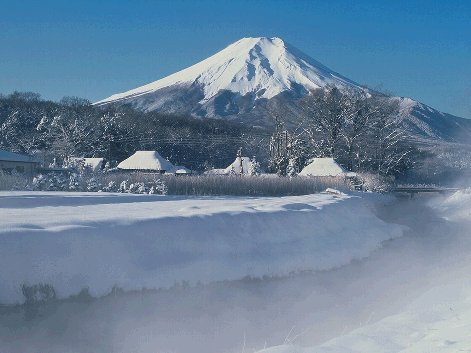
The Fuji Five Lakes Region (Fujigoko)
Fujigoko refers to the five lakes around the northern foot of Mt. Fuji: Yamanaka-ko, Kawaguchi-ko, Sai-ko, Shoji-ko, and Motosu-ko. In ancient times, lava flow from volcanic eruption of Mt. Fuji spread across the area, damming up rivers and resulting in the formation of these lakes.
Lake Yamanaka-ko
The easternmost and largest of the five lakes, Lake Yamanaka-ko is also the third highest lake in Japan at 3,217 ft above sea level. Known for its summertime fun, the lake attracts many young people for yachting, boardsailing and tennis.
A number of school athletic clubs find the area an ideal training site because of its plentiful amenities. After enjoying sports, you can relax in two spas beside the lake--""Benifuji-no-Yu"" and ""Ishikawa-no-Yu.""
In winter, people enjoy fishing for wakasagi, or freshwater smelt. Marimo spherical waterweeds, though said to grow only in cold areas, were found here in 1956. The waterweeds were named Fuji Marimo and are designated a prefectural natural species.
Alongside the lake, there are many restaurants, shops and museums. Many kinds of flowers bloom beautifully in the big Hana-no-Miyako-Koen Flower Park located about half a mile away.
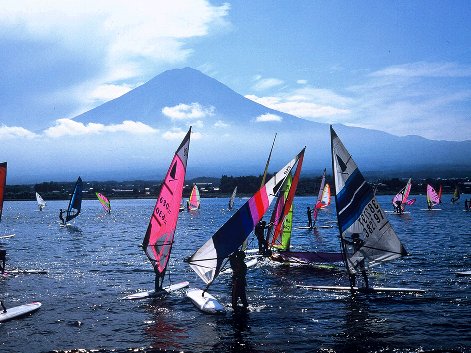
Lake Kawaguchi-ko
Lake Kawaguchi-ko lies at the center of the five likes, and because of its easy access, provides a foothold for sightseeing around the Mt. Fuji area. The well prepared sightseeing and accommodation facilities attest to the popularity of this lake. The only island of the five lakes is found here, and the view from Kawaguchiko-Ohashi Bridge is magnificent. As with Lake Yamanaka-ko, the fun has no limit: boating, yachting, windsurfing, fishing, cycling along the lake shore, taking in a hot spring. The spectacular view of Mt. Fuji from the lake provides the perfect subject for many artists and photographers. The image of the mountain as seen from the northern shore--Fuji reflected on the lake (sakasa Fuji) and accompanied with cherry blossoms in full spring bloom--is the epitome of Japanese beauty.
From mid-June to late July, visitors can see beautiful purple lavenders at Yagisaki Park and Oishi Park, the main sites of the Kawaguchiko Herb Festival.
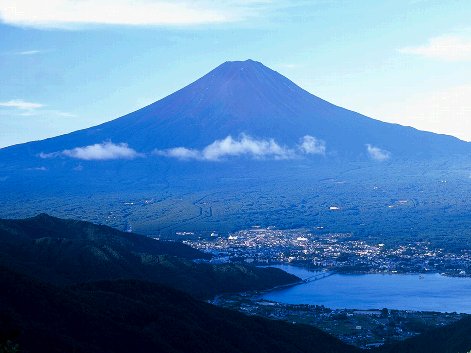
Lake Sai-ko
This quiet lake surrounded by dense forest has been dubbed "the lake of the maiden." Reminiscent of clear, deep blue eyes, the color of its water is somewhat mysterious. Aokigahara Jukai Forest has lined the western side of the lake for centuries. There are many camping grounds on the lakeside.
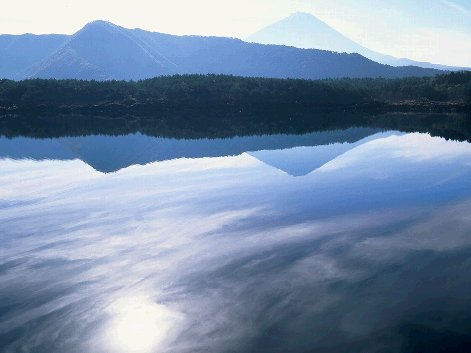
Lake Motosu-ko
The water temperature of Lake Motosu-ko, the ninth deepest lake in Japan (463 ft), never gets below 39o F, making it the only one of the five lakes which does not freeze in winter. This lake, along with Lake Sai-ko and Lake Shoji-ko, was formed by lava flowing across what is now Aokigahara Jukai Forest and into the enormous lake that once dominated the area. These three lakes, at 2,951 ft above sea level, remain connected by underground waterways. The motif of Mt. Fuji and the lake on the old five-thousand yen bill is a view from Motosu-kotaken by photographer Koyo Okada.
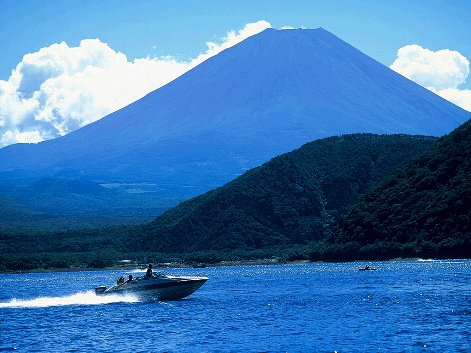
Lake Shoji-ko
Lake Shoji-ko is the smallest of the five lakes. With remnants of lava flow still observable, the lake has long been a popular sightseeing spot. Hotels were built here as long ago as the Meiji period, which started in the late 1800's, and many guests from all over the world have visited since then. Lake Shoji-ko is a well-known site for catching plenty of herabuna, or crucian carp.
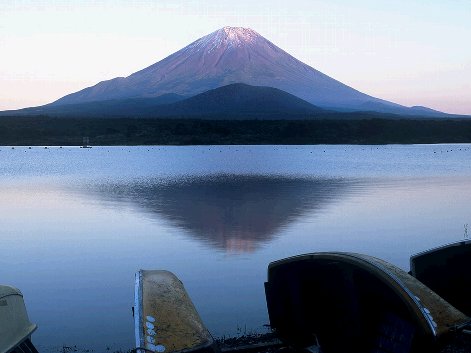
Oshino Hakkai
Hakkai translates as eight ponds and refers to those ponds designated as national natural treasures in the Oshino area: Okama-ike, Sokonashi-ike, Choshi-ike, Nigori-ike, Waku-ike, Kagami-ike, Shobu-ike and Dekuchi-ike. Snow water from Mt. Fuji flows through the ground and feeds these ponds with clear, fresh spring water, which has an average temperature of 55o F and was, in 1985, selected to be among the hundred best natural waters in Japan.
Oshino village is also famous for its beautiful natural environment. Many flowers come into bloom between May and September--irises in May, lupines in June, sunflowers in July, and cosmoses in August. Countless photographers aspire to capture the harmony of Mt. Fuji and the unspoiled environment of the village.
Soba buckwheat noodles made with Oshino’s clear water are also popular for their delicious taste.
The Oshino Hakkai Festival is celebrated every summer to express appreciation for and alliance with Hakkai. The festivities attract an increasing number of visitors every year.
